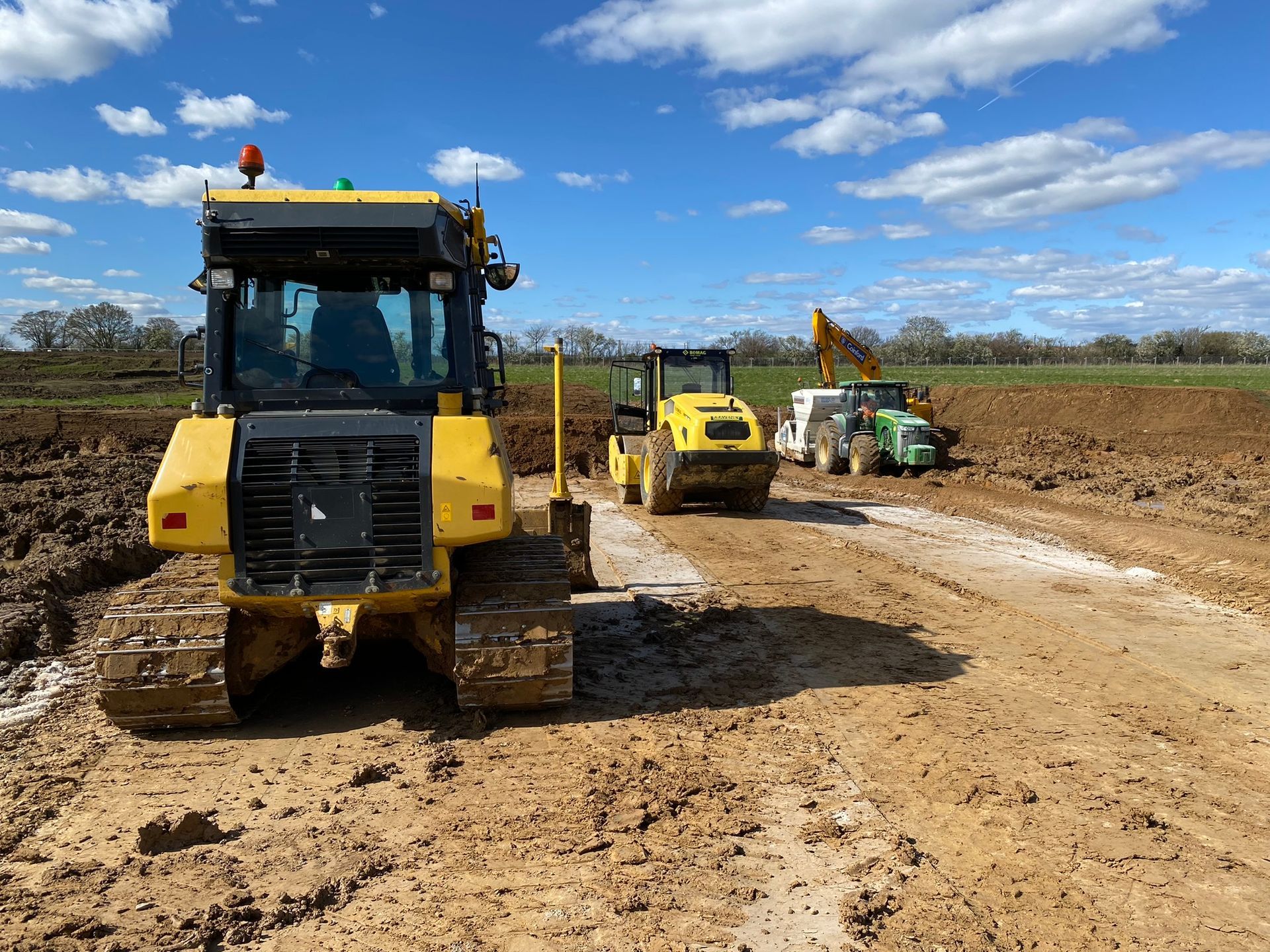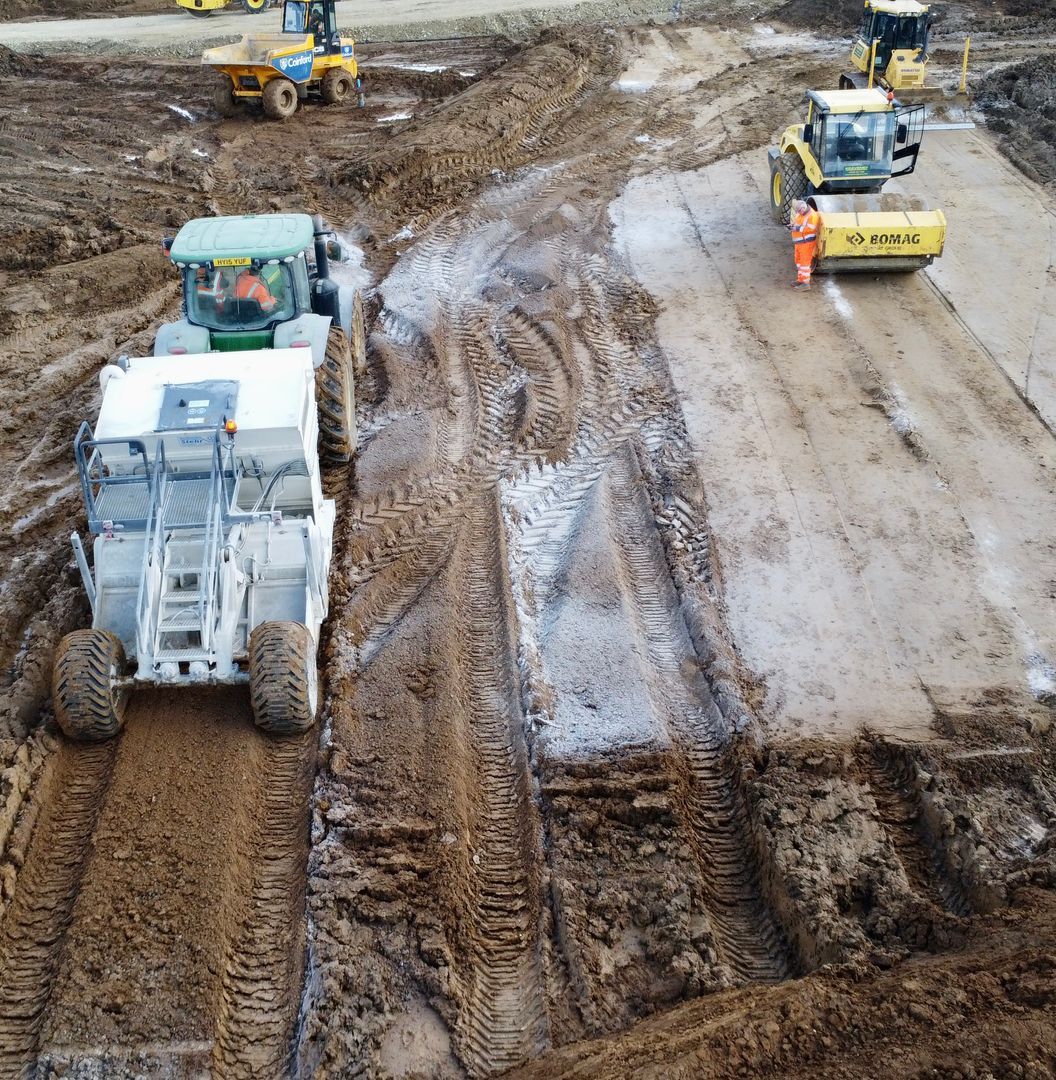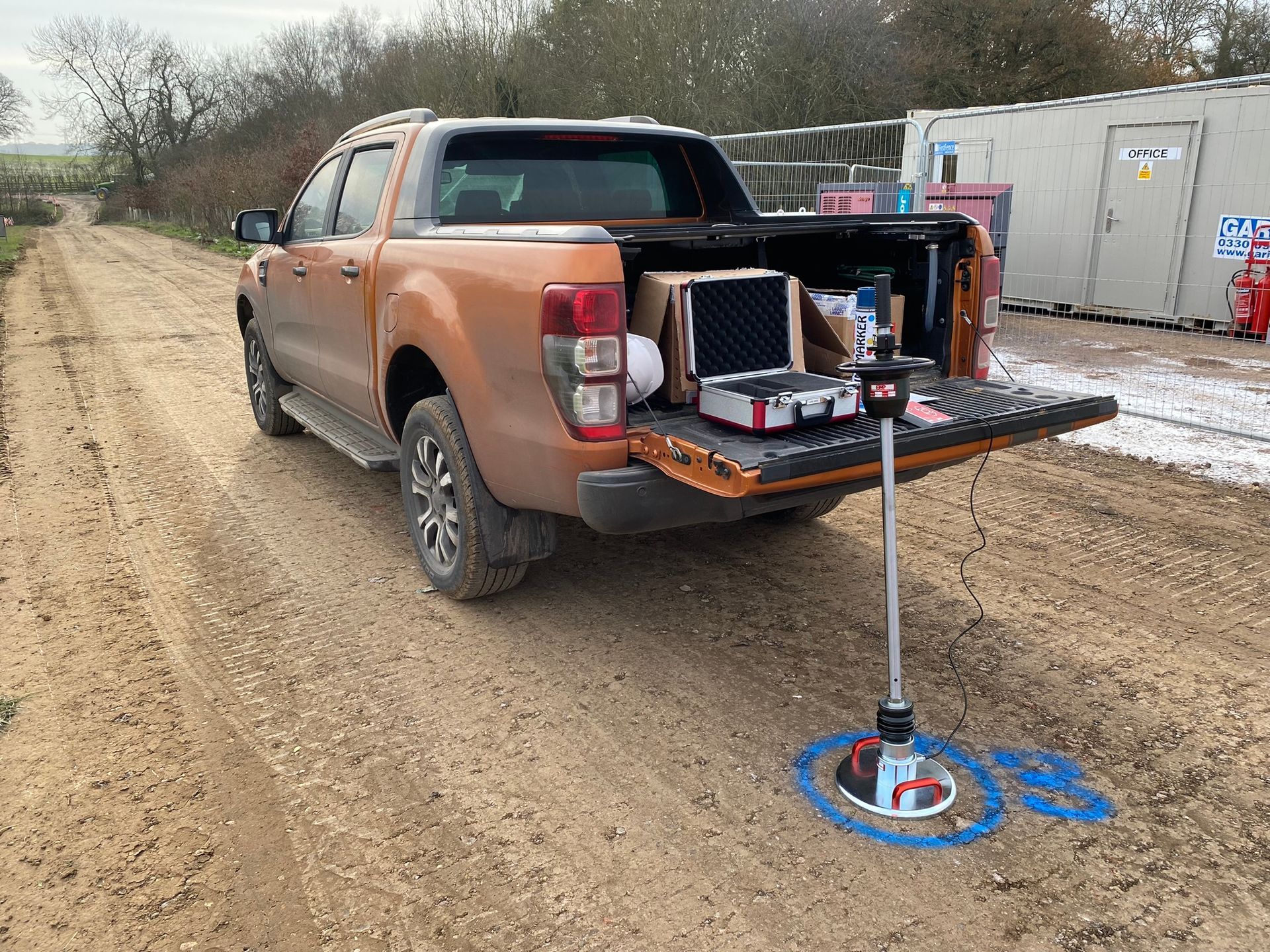What is Soil Stabilisation?
Soil Stabilisation involves the use of stabilising agents (binder materials) to improve the compressibility, strength, permeability and durability of weak soils. Selected binders materials are added to site won soils to reduce moisture content to enable maximum compaction. This allows composite aggregate strength layers to be formed in the construction make-up, allowing disposal and aggregate import to be significantly reduced. The effects of lime stabilisation and soil modification are immediate, but cement stabilisation is still subject to a curing period.
Methods of soil stabilisation
There are two common methods of soil stabilisation:
Lime stabilisation is the treatment of soils to achieve long term increase in strength due to cementitious reactions activated by lime
Cement Stabilisation is the addition of further cementitious binders to increase the platform to greater strengths, including improvement of the soil to meet the design requirements of adoptable highways or working platforms, such as pile mats
Typical applications
- Improving wet materials for engineered fill
- Sub-base replacement for roads and foundations
- Use of surplus soils to form capping/fill material 9D as a direct replacement for 6F4/6F5
- Improving capping layer performance
- Constructing pile mats and engineered platforms
- Treating contaminated land
Soil stabilisation can reduce construction programme times by minimising site preparation and designing out imported materials and unacceptable material disposal.
Soil improvement allows wet ground to be dried and strengthened within a very short timescale. This permits working in wet conditions and allows work to restart promptly following rainfall.
For the construction programme benefits to be fully realised, longer lead-in time is needed during the design stage for ground investigation and mix design.
Benefits
The growing use of brownfield sites and the focus on sustainability issues underlines the benefits of soil stabilisation. Stabilising land using lime, cement or other binders is an extremely cost-effective method of converting areas of weak or contaminated soil into a useable and environmentally-sound construction material.
Particular benefits of soil stabilisation include:
- Speed of project completion
- Reduction in cartaway and imported aggregates, offering significant savings on more traditional methods of road construction
- Reduced construction traffic movements
- Minimal environmental impact compacted to ‘dig-and-dump’
- Provision of an economic and effective subbase
- Ability to deal with sulphate-bearing soils
- Allows re-use of contaminated soils by encapsulating the contaminants within the stabilised subgrade
Commercial benefits of soil stabilisation
The most obvious commercial benefit is on projects where all the excavated soil needs to be removed from site, and all the permanent construction requires imported aggregate. In situ stabilisation of suitable soils saves the cost of import and export, with the alternative cost of the stabilised option often being around two thirds by comparison
Food for thought...
In situ stabilisation is most cost effective when replacing exported soil and imported aggregate. Costs are typically two thirds of the equivalent traditional method, with the added benefits of derisking reliance on availability of aggregate and tipping sites, both of which can be difficult to find in certain times of the year. In simple terms, a 1km long road, 6 metres wide, with a 500mm capping layer would require around 300 loads of muckaway, and 6000t of imported aggregate. Stabilisation of the capping would replace 600 lorry movements at a significant cost and time saving
Speed
Earthworks can be carried out alongside stabilisation, without reliance on external haulage requirements
Spend
In situ stabilisation typically costs around two thirds of the cost of muckaway and imported aggreagte
Specification
In situ stablisation is fully covered in clauses 613-615 of the Specification for Highways Works Series 600
Have a requirement in mind?
We’re here to help!
Each construction site is unique, due to soil type, moisture content, the design requirements, the practical applications, and means of carrying out the work. We assess each project individually and propose solutions aimed at giving the best value engineered solution.
All Rights Reserved | Remediology (SE) Limited



